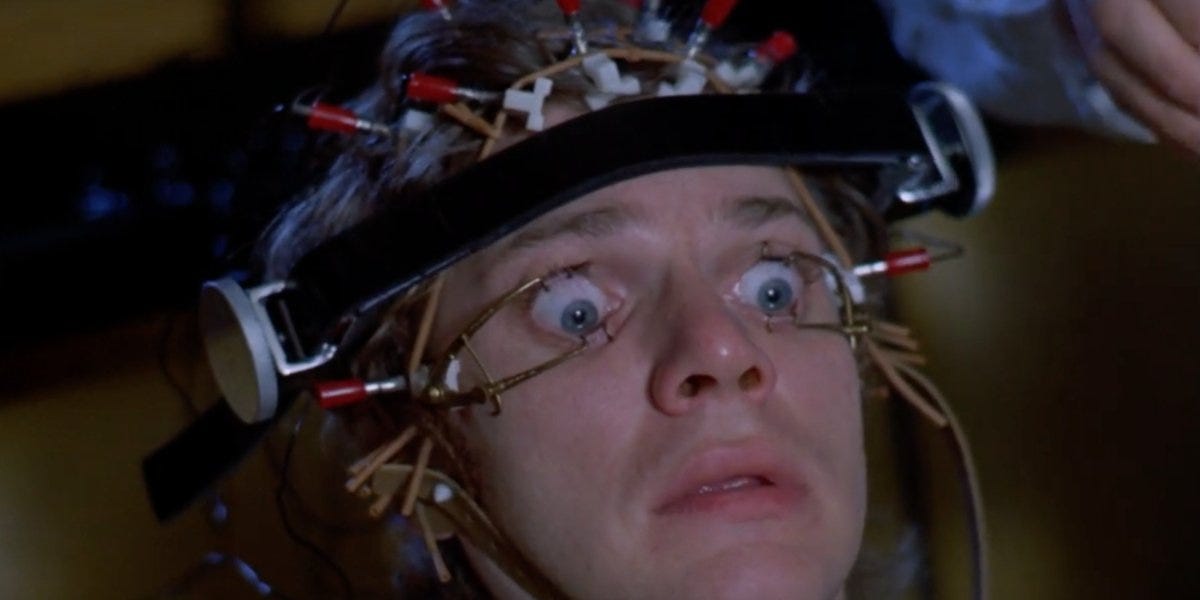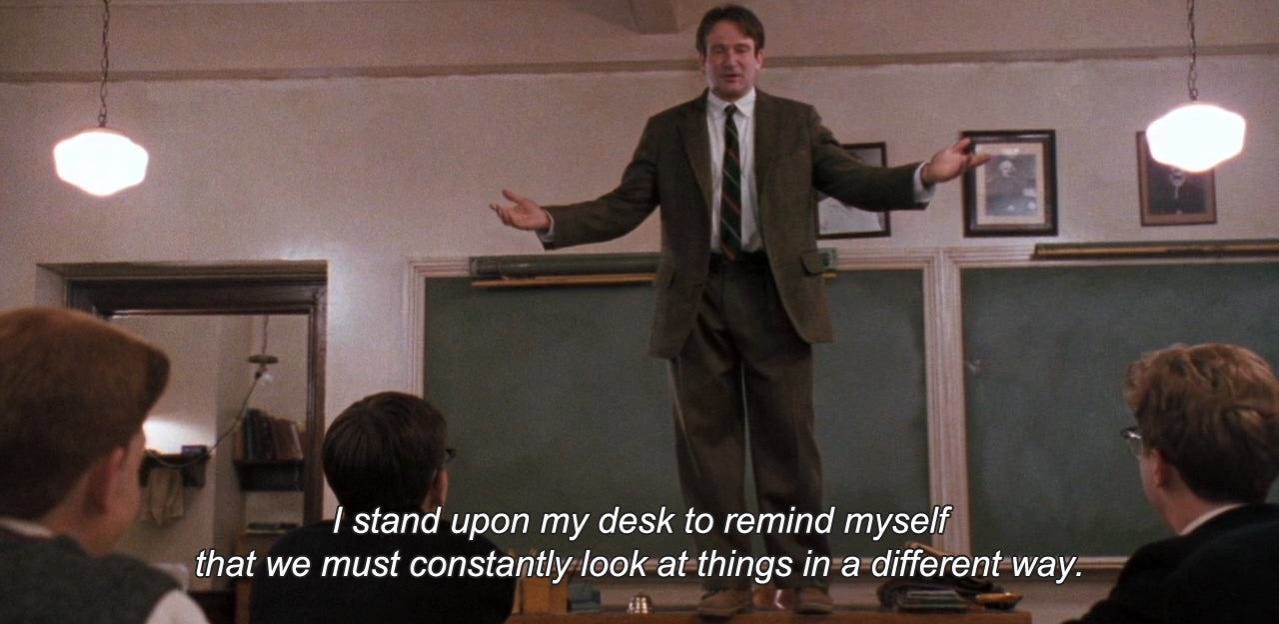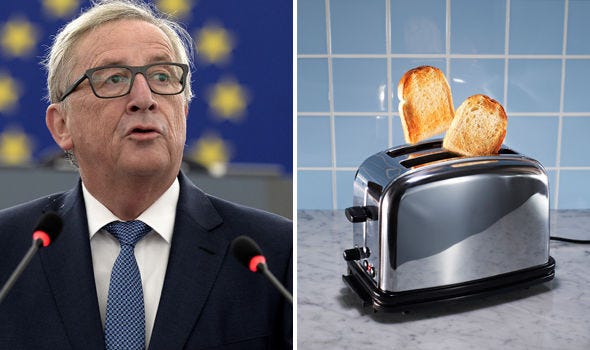The art of thought leadership
Or why we don’t listen to Jean-Claude Juncker’s cooking advice - by Chris Ruff.
This month I’m delighted to have a guest piece from a friend and frequent collaborator, Chris Ruff. Chris is currently Director of Communications for DIGITALEUROPE. We have shared common projects past (working with the Commissioner for Trade) and present (as part of the leadership team behind restless.brussels), so I was very excited to finally nail him down to do a piece for this newsletter. Chris has long advised senior politicians and public figures on their strategic communications and personal branding - so there’s no better man to help us come to grips with the concept of thought leadership.
Beyond the jargon
Despite sounding like a brainwashing technique, thought leadership is classic business jargon adopted into the political field. Like all jargon, it puts people off who aren’t in the know. But in reality there’s nothing more intuitive.
If done right, it has huge potential to open doors for you personally, and the organisation you work for. Yet in the wild, it’s mostly just a series of desperately dull LinkedIn posts.
‘Thrilled to be invited to speak at [insert humble brag]’ – the only place these posts lead my thoughts to is the sweet embrace of death.
What is ‘thought leadership‘?
Part of the issue with thought leadership is that everyone has their own idea of what it is. Beyond the banal LinkedIn blurts, in my experience ‘thought leadership’ in Brussels often means a certain type of long-form report that has nice pictures.
Don’t limit yourself. My definition is simple, it’s about establishing credibility, showing expertise, and being entertaining.
Unlike policy communications, your goal is not to change minds. It is not an opportunity to ram home your recommendations. It is about establishing trust. Your goal is to prise open the door so that your messages can sneak through at a later date.
As a successful thought leader, what you say will carry more weight. Policymakers, or customers, are more likely to listen to you. Journalists will come to you for quotes.
How to apply it
Good communications can be boiled down to the right message, at the right time, delivered in the right format.
The right message

The goal is less to persuade but more to inform and – as we just discussed – entertain. Find something relevant in the news, break it down, offer an insiders’ view – ‘how did this happen?’ Bringing original data will enhance your credibility.
You might not be an expert, but think about what you or your organisation’s unique take could be. Be honest. If you don’t understand something, say it. Authenticity is key.
Going back to the typical LinkedIn post I mentioned in the opening. You have added a photo of you, ideally a selfie, you have gamed the algorithm and people will see a lot of your face as they scroll.
Whilst there is some value in being seen in the right places and demonstrating that others value your input, in my view it fails as thought leadership. You are not adding anything insightful and, being clichéd, it can have a negative effect on your credibility.
Worst of all, it’s boring. Yes, people are probably talking about you, but it’s behind your back. Not all engagement is good engagement. People like to gawp at traffic accidents too.
The right time

Frankly, there is always a right time for thought leadership. As social media pros will tell you, regularity is key. But in choosing your topics you should take an outside-in approach. Start from what everyone else is interested in, ‘what’s in the news’, not your organisational priorities.
Recognise that pumpkins are interesting in October. But also recognise that by November 1 they’ll be less interesting again.
External factors matter. Look at the EU right now: The policy engine has paused. Hordes of new MEPs and other politicians will descend on the town. People are thinking about the future, and they are scratching around for ideas. Now is the perfect moment to establish yourself as a trusted voice on your issue.
The right format
Like all communications the format depends on your audience. A CEO is unlikely to put out Youtube shorts to explain her strategy pivot, but thought leadership is not immune from shortened attention spans, and new formats should be embraced.
Social media – that’s thought leadership; a podcast – that’s thought leadership; and traditional op-ed – that’s thought leadership. Hell, even memes can be thought leadership.
Whisper it, but I do think there is still space for traditional reports with forewords and graphs as thought leadership, as long as you have strong messages. There are certain policy or scientific communities that just won’t take you seriously otherwise. If that’s your audience, go for it. The important thing is to be entertaining and package it up in a way your audience will respond.
Ultimately when thinking about an issue you want to communicate, think Robin Williams in the Dead Poet’s Society: you are in front of a classroom of gormless schoolboys. How are you going to get their attention? Find the equivalent of jumping on a desk, and do that. Encourage your followers to head into a grotto in the woods and wear capes and recite poetry.
Is it really so simple?
Thought leadership sounds fancy but it is an essential pre-step towards achieving your goals.
If it sounds simple, that’s because it is. Most of us know this instinctively. There are some people we trust more than others. If Jamie Oliver tells me that a particular recipe tastes good, I’m more likely to believe him (except if I’m Spanish of course), than if Jean-Claude Juncker does. Nothing against Mr Juncker’s cooking, he’s just not an established expert in this particular area.
In short, the focus shifts from ‘how can I convince this person?’ to ‘how can I convince this person to listen to what I have to say?’. It’s a subtle but essential change in mindset and one we can all build into our work.
Which thought leader are you?
The columnist
Journalists are the original thought leaders. Their goal is to gain readers and drive engagement by grabbing your attention. What they lack in technical expertise of an issue, the best among them make up for with timely, entertaining remarks, and their finger on the pulse of what people care about. And as trust in institutions falters, trust in individual journalists is becoming more important.
The entertaining nerd
Humour is their secret weapon. They mix in complex data points about their chosen policy area with photos of cats or a scything line by line deconstruction of that thing that everybody is watching on the telly. Think Menswear Guy.
The CEO
The stakes here are higher. They are the figureheads of their organisation and their credibility is drawn from their reputation and that of the company. Thought leadership is crucial to communicate their strategy – to board members and employees, to policymakers and customers. It is an opportunity to show who they are, and what the company stands for, beyond selling things. Frivolous humour is less appropriate, but clear speaking and leaning on experience can help us get beneath the armour of corporate language.










I have a question for Tom. As a native English speaker, I've come to notice a certain trend in the Brussels English vernacular. Namely, people here love to use "in" + the progressive verb. Examples: "The role of the Parliament *in driving* the green transition is important"; "The CEO stressed the power of public-private partnerships *in maintaining* leadership". Have you noticed this? To me it feels rather clunky and I always edit such cases out of texts produced by my office. What do you think?